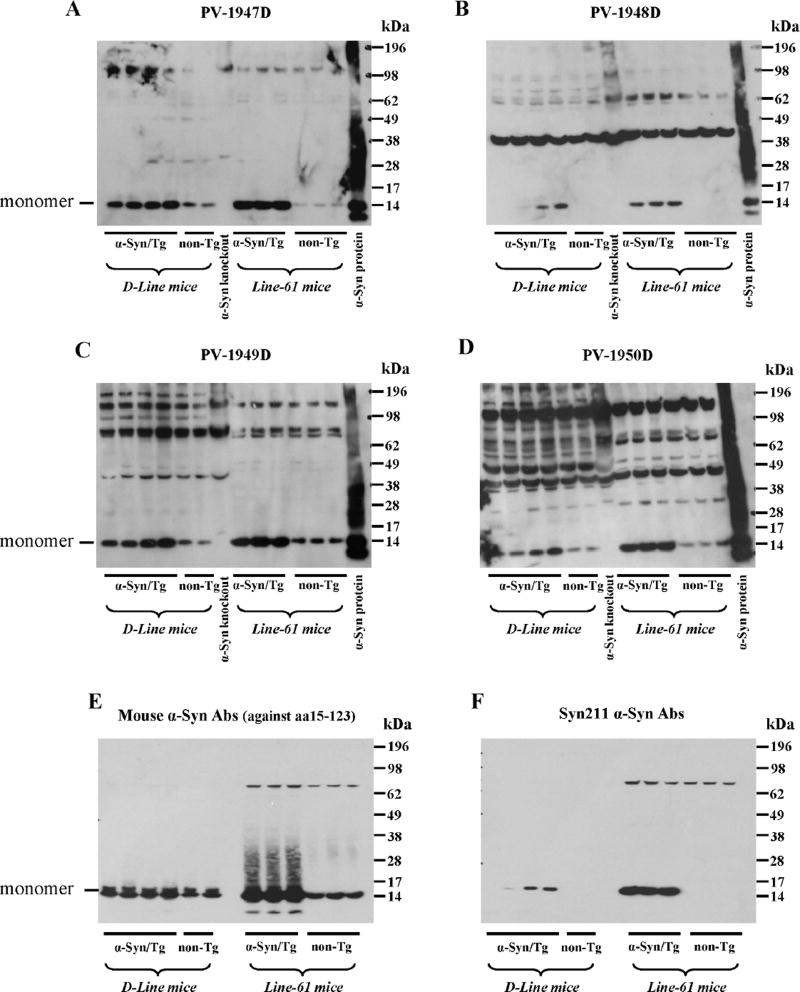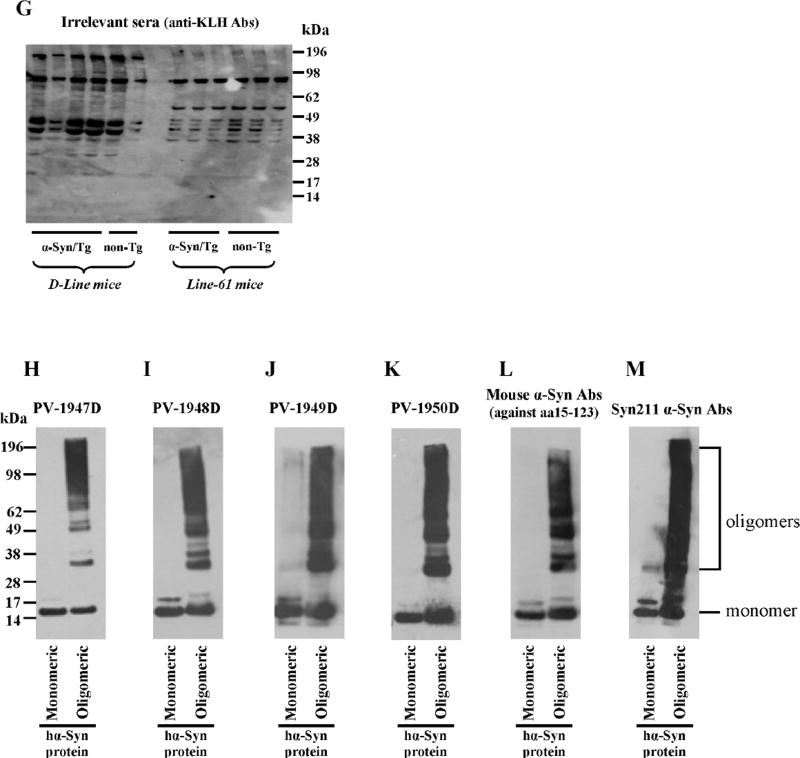Fig. 7.
DNA vaccines induced antibodies that recognize hα-Syn monomers in brain homogenates from hα-Syn/tg mice (line D and line 61) and both monomers and oligomers generated in vitro from recombinant protein. Brain homogenates from non-Tg mice and α-Syn KO mice were used as controls. Staining was done with sera collected from mice immunized with different DNA vaccines: PV-1947D (p3hα-Syn85–99-MultiTEP; A), PV-1948D (p3hα-Syn109–126-MultiTEP; B), PV-1949D (p3hα-Syn126–140-MultiTEP; C), PV-1950D (p3hα-Syn126–140-3hα-Syn109–126-3hα-Syn85–99-MultiTEP; D). Of note, PV-1948D immunized sera recognized only hα-Syn, while all other DNA vaccines induced antibodies that also recognized mouse α-Syn (A–D). Mouse anti-α-Syn antibody against aa15–123; (E) and Syn211 anti-α-Syn antibody (F) were used as positive controls, and irrelevant immune sera served as a negative control (G). Oligomers and monomer were prepared from recombinant protein and immunostained with the same immune sera (H–K) or commercial mouse α-Syn antibody (L) and Syn211 anti-α-Syn antibody (M).


